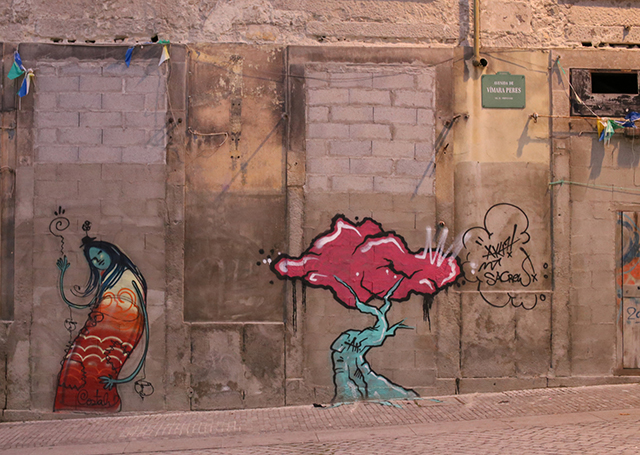There’s a backlog of half-written posts building up here due to the distractions of a 4 month old baby who doesn’t recognise blog writing as a valid activity. This one shouldn’t be too hard to wrap up though, so I’ll give it a go. In early November I spent 5 days in Porto on a study trip with the 3rd year students from Bath University, where I’m a visiting tutor.
I’d been there once before on the press trip for the opening of the Casa da Musica concert hall, writing a review for Building Design. On that first trip I had an amazing couple of days interviewing Rem Koolhaas and Cecil Balmond, as well as visiting Alvaro Siza & Eduardo Souto de Moura in their office, but the schedule was so packed I didn’t get into the city centre. This time I had a chance to have a proper look around.
It’s all ridiculously picturesque, with colourful buildings in varying states of disrepair tumbling down the rocky hillsides to the Duoro river, magnificent bridges and the neon signs of the port warehouses proclaiming their English names back at the city from the opposite bank. It rained most of the time and we got soaked on the first day so it felt more like a camping trip in Wales at times, trying to get our clothes dry for the next day. The flat, grey light was wonderful for photos though and I’ve put some up below.
First up is a hidden gem which you would never know about without a tip-off. This is the São Nicolau Baths & Wash House by an architect called Paulo Providência (1992). It’s at the western end of Rua da Reboleira at the junction with Rua do Infante D Henrique. There are some drawings of it here.
The main attraction for architects is the work of Alvaro Siza who lives and works in Porto, and is more prolific than ever at the age of 81. I’ve visited a lot of his buildings in Portugal and further afield and he is certainly one of my major influences. His work is widely published so I won’t put lots of images up, but here are a couple of the changing room entrances from one of his earliest works, the swimming pools amongst the rocks at Leça da Palmeira.
Back in the city centre we came across the Mercado Bolhao, a dilapidated 2 storey market that takes up an entire city block. The slope of the land means you enter at the upper level from the street on one side and the lower level from the street on the other.
You are constantly aware of the presence of the landscape in the city. Every street dips up and down across the contours and outcrops of rock nestle amongst the buildings. The wet climate means any nook or cranny gets colonised by plants, so the rocks and walls often carry a veil of lush greenery. At the main São Bento station and even in some metro stations you see green beyond the ends of the platforms.
It isn’t all grey though:
































